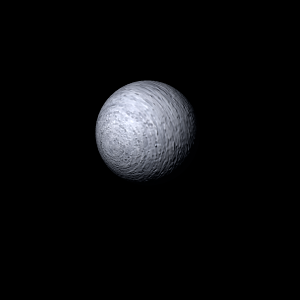|
|
Space Astro
|
Info for exoplanet "Corchal Ti"
| Scientific (actual) data |
|---|
| Name | WASP-67 b |
| Planet status | Confirmed |
| Planet mass | 0.42 |
| Radius | 1.4 |
| Orbital period | 4.61442 |
| Semi major axis | 0.0517 |
| Orbit eccentricity | 0 |
| Inclination | 85.8 |
| Angular distance | 0.00023 |
| Discovered | 2011 |
| Updated | 2012-04-23 |
| Tzero tr | 2455820 |
| Publication | Published in a refereed paper |
| Detection type | Primary Transit |
| Star name | WASP-67 |
| Right ascension | 295.75° |
| Declination | -19.95° |
| Mag v | 12.5 |
| Star distance | 225 |
| Star metallicity | -0.07 |
| Star mass | 0.87 |
| Star radius | 0.87 |
| Star sp type | K0V |
| Star temperature | 5200 |
| Wikipedia article | WASP-67 b |
Back
| |
| Fictional info (?) |
|---|
| Suggested name | Corchal Ti |
| Planet type | Hot gas giant |
| It has the densest atmosphere of the two hot gas giants, consisting of huge amounts of argon. |
| Atmosphere | Argon | 53% |
| Ethane | 27% |
| Hydrogen deuteride (HD) | 12% |
| Sulfur dioxide | 4.5% |
| Ammonium hydrosulfide (NH4SH) | 3.5% |
| Molecular hydrogen | 0.062% |
| Atmospheric pressure | 7 bar |
 |
| No known satellites |
| Google search for Corchal ti |
|
Website by Joachim Michaelis
|
|
|
|